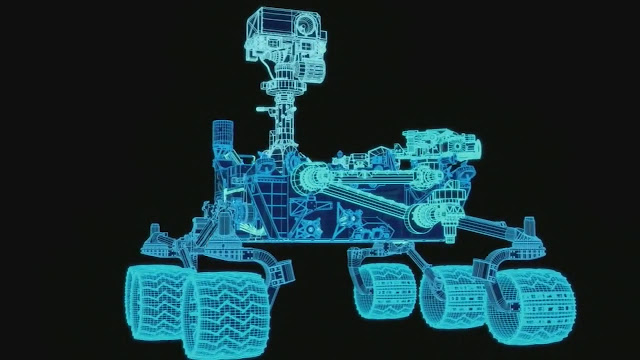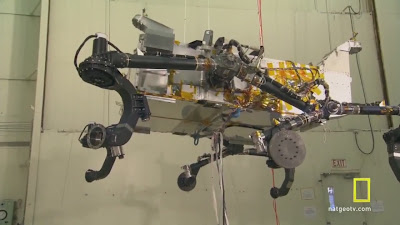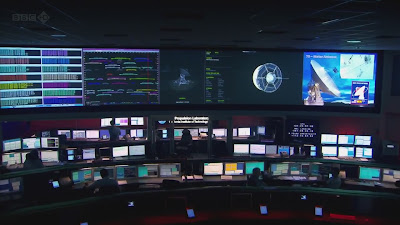
Martian Mega Rover - National Geographic.
Horizon 2012 Mission to Mars - BBC.





The nuclear-powered vehicle - the size of a car - will be winched down onto the surface of the Red Planet from a rocket-powered crane. This way of landing is spectacular for the engineers
to maneuver the Curiosity Rover. It is like the helicopter lowered the rope to rescue the wounded.


7th Parachute Regiment Royal Horse Artillery Conduct Afghanistan Opera.
A Royal Air Force Chinook helicopter is seen carrying a 105mm Light Gun.
This is different from using the parachute to drop the object.

















They built two vehicles, one is sent to Mars, one is used for the test on the earth.






if one motor malfunctioned, the other motors can continue to deliver the power.








Dry lubrication.

Material Science plays the most important role in the space exploration.




Final come down to Mars test, the wheels removed to reduce weight simulating the gravity
less than half as it's on the earth.


Sample Analysis at Mars.

The Sample Analysis at Mars instrument suite takes up more than half the science payload on board the Mars Science Laboratory rover and features chemical equipment found in many scientific laboratories on Earth. Provided by NASA's Goddard Space Flight Center, Sample Analysis at Mars will search for compounds of the element carbon, including methane, that are associated with life and explore ways in which they are generated and destroyed in the martian ecosphere.







































the bag overlapped, before it starts to fill and turn the parachute inside-out. In this photo,
we can see the a little piece of the fabric pulled itself on the wrong side way to go.


wind tunnel. When the air is moving at 90 miles per hour, the MLS parachute takes ten
times longer to deflect in the wind tunnel.



































No comments:
Post a Comment